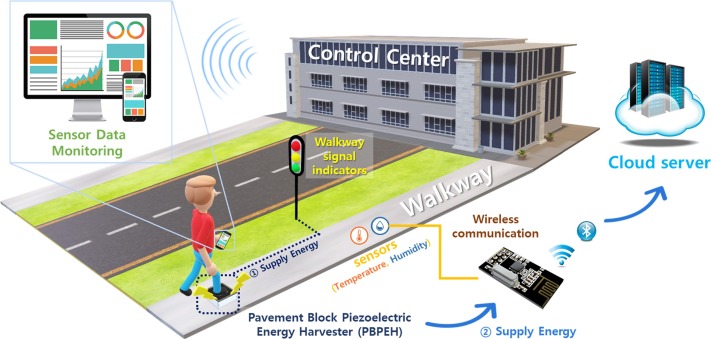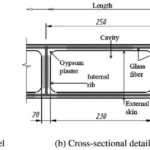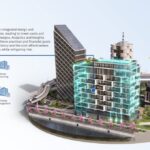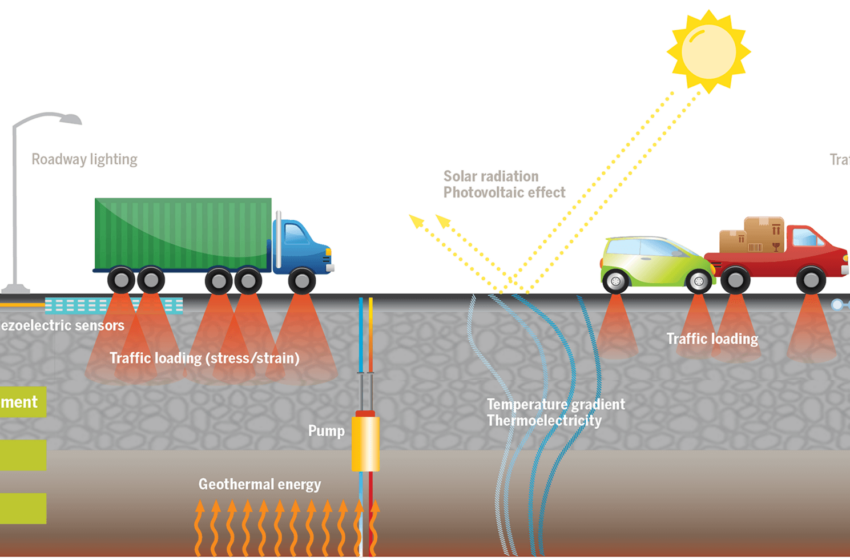
In the quest for sustainable energy solutions, innovative technologies continue to emerge, and one of the most exciting concepts is piezoelectric pavement. This technology, which generates electricity from the mechanical pressure applied to road surfaces, is poised to transform how we generate power for everyday appliances. In this blog, we’ll explore the concept of piezoelectric pavement, its potential applications, and how it could revolutionize the way we power our devices while reducing our reliance on traditional energy sources.
What is Piezoelectric Pavement?
Piezoelectric materials are materials that generate an electric charge when subjected to mechanical stress or pressure. These materials can convert kinetic energy—like the weight of a vehicle driving over a road—into electrical energy. When incorporated into pavement systems, these materials can capture the energy created by the constant motion of traffic and use it to generate power.
Piezoelectric pavement involves embedding piezoelectric crystals or devices within the road surface, typically beneath the asphalt. As vehicles pass over the pavement, their weight and movement cause the piezoelectric devices to deform, generating electricity. This electricity can then be used to power streetlights, traffic signals, or even nearby infrastructure.
How Does Piezoelectric Pavement Work?
- Pressure from Traffic: The movement of vehicles, such as cars, trucks, and buses, creates pressure on the road surface. This pressure causes the embedded piezoelectric devices to deform or vibrate, which generates an electrical charge.
- Energy Harvesting: The energy generated from the mechanical stress is captured by the piezoelectric devices. These devices are connected to an electrical circuit, allowing the captured energy to be stored or used immediately.
- Power Distribution: The electricity generated by piezoelectric pavement can be used to power nearby infrastructure, such as streetlights, traffic signals, or even public charging stations for electric vehicles (EVs). In some cases, excess energy can be stored in batteries or fed into the local grid.
Benefits of Piezoelectric Pavement
- Renewable Energy Source: Piezoelectric pavement offers a unique way to generate renewable energy from an otherwise unused source—roadways. By harnessing the kinetic energy produced by moving vehicles, this technology can provide a continuous supply of power without relying on fossil fuels or conventional energy sources.
- Sustainability: Piezoelectric pavement reduces the need for external power sources, like electricity from the grid or diesel generators, to power streetlights and traffic signals. This helps reduce carbon emissions and promotes a cleaner, more sustainable urban environment.
- Energy Independence: By generating power locally from road traffic, piezoelectric pavement can reduce a community’s dependence on external energy sources. This is particularly beneficial in remote areas or regions with unreliable access to grid electricity.
- Cost-Effective: While the initial installation of piezoelectric pavement may be costly, the long-term savings can be significant. The energy generated from the pavement can reduce electricity bills for municipal infrastructure, such as streetlights and traffic signals, making the system a cost-effective solution in the long run.
- Reducing Infrastructure Load: By generating energy from road traffic, piezoelectric pavement can reduce the load on the power grid, especially during peak hours. This helps stabilize the grid and ensures a more reliable energy supply for communities.
- Innovation in Urban Planning: Piezoelectric pavement is a forward-thinking solution for urban planners looking to integrate renewable energy sources into their cities. By embedding energy-harvesting technologies directly into the infrastructure, cities can become more energy-efficient and resilient.
Applications of Piezoelectric Pavement
- Streetlights and Traffic Signals: One of the most promising applications of piezoelectric pavement is in powering streetlights and traffic signals. These systems require a constant power supply, and piezoelectric pavement can provide a reliable source of energy without the need for external electricity.
- Electric Vehicle Charging Stations: As the adoption of electric vehicles (EVs) increases, there is a growing need for EV charging infrastructure. Piezoelectric pavement can generate electricity to power charging stations, reducing the reliance on grid power and enhancing the sustainability of EV networks.
- Public Infrastructure: Beyond streetlights and traffic signals, piezoelectric pavement can also power other public infrastructure, such as smart city devices, surveillance cameras, or environmental sensors. This can make cities more efficient and connected while reducing energy consumption.
- Data Centers and Telecommunications: Some innovative projects are exploring the use of piezoelectric pavement to power small data centers or telecommunications infrastructure located along highways and city streets. The electricity generated from passing vehicles could help run these critical services while reducing the need for fossil fuels.
- Military and Remote Installations: Piezoelectric pavement could be used to power infrastructure in remote areas, such as military bases, research stations, or emergency shelters, where access to conventional power sources may be limited.
Challenges and Considerations
While piezoelectric pavement holds significant promise, there are several challenges to consider:
- High Initial Cost: The installation of piezoelectric pavement can be expensive due to the cost of the materials, the technology, and the installation process. However, the long-term benefits in terms of energy savings and sustainability may outweigh the initial investment.
- Energy Efficiency: The amount of energy generated by piezoelectric pavement depends on several factors, including traffic volume, vehicle weight, and the efficiency of the piezoelectric devices. In areas with light traffic, the amount of energy generated may not be sufficient to meet local power needs.
- Durability: The piezoelectric devices embedded in the road surface need to be durable enough to withstand heavy traffic, weather conditions, and wear and tear. Ongoing research and development are focused on improving the lifespan and performance of piezoelectric materials.
- Infrastructure Integration: The integration of piezoelectric energy into existing infrastructure, such as the power grid, requires advanced energy management systems. Efficient storage and distribution of the generated power are essential for ensuring a reliable energy supply.
The Future of Piezoelectric Pavement
The future of piezoelectric pavement is bright, with ongoing advancements in technology and materials making it more efficient and cost-effective. As urban areas look for sustainable solutions to energy challenges, piezoelectric pavement could become a vital part of smart city initiatives.
In the coming years, we can expect to see more pilot projects and real-world applications of piezoelectric pavement, especially in high-traffic areas like highways, city streets, and toll booths. With continued investment in research and development, this technology could play a significant role in the future of renewable energy and sustainable infrastructure.
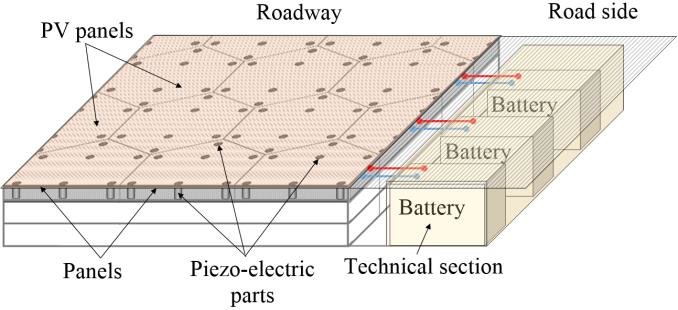
Piezoelectric Pavement: Powering the Future of Roadways and Appliances
The world’s roads are constantly buzzing with activity, from bustling city streets to high-speed highways. But what if these roads could do more than just transport people and goods? What if they could generate electricity to power nearby appliances and infrastructure? This is the vision behind piezoelectric pavement, a cutting-edge technology that converts the energy from vehicles driving over roads into usable electrical power. In this blog, we’ll take a deep dive into how piezoelectric pavement works, its potential applications, and the benefits it can offer to cities, businesses, and individuals alike.
What is Piezoelectric Pavement?
Piezoelectric pavement is a renewable energy technology that harvests energy from the mechanical pressure generated by vehicles passing over the road surface. Piezoelectric materials, which are capable of converting mechanical stress into electrical energy, are embedded into the pavement. As vehicles drive over these roads, the pressure exerted by the tires causes the piezoelectric devices to generate electrical energy.
This technology allows roads to harvest energy from the constant flow of traffic and use that energy to power nearby systems, such as streetlights, traffic signals, or even electric vehicle charging stations. The idea is to transform roadways, which are typically just passive surfaces, into active, energy-producing infrastructures.
How Does Piezoelectric Pavement Generate Power?
- Mechanical Stress: When vehicles pass over the piezoelectric pavement, their weight causes a deformation of the piezoelectric materials embedded within the road. This deformation creates an electrical charge.
- Energy Capture: The electrical charge generated from the mechanical stress is captured by the piezoelectric devices. The energy is then stored or used immediately, depending on the system’s design.
- Powering Appliances: The electricity generated by the piezoelectric pavement can be used to power a variety of appliances and infrastructure located near the road, such as streetlights, traffic cameras, or signal systems. Excess energy can be stored in batteries or fed into the local grid.
Key Applications of Piezoelectric Pavement
- Powering Streetlights and Traffic Signals: The most immediate application of piezoelectric pavement is in powering streetlights and traffic signals. These systems require continuous energy to function, and piezoelectric pavement can provide a sustainable, locally generated power source without relying on grid electricity.
- Electric Vehicle Charging Stations: With the increasing adoption of electric vehicles (EVs), piezoelectric pavement can be used to power charging stations along roadways. The energy generated from passing vehicles can be directly used to charge EVs, reducing the need for additional infrastructure and lowering electricity costs.
- Smart City Infrastructure: Piezoelectric pavement can be integrated into smart city projects, powering sensors, surveillance cameras, environmental monitors, and other smart technologies embedded in the urban environment. This would make cities more energy-efficient while reducing the reliance on conventional power sources.
- Data Collection and Environmental Monitoring: The energy harvested by piezoelectric pavement could be used to power sensors that collect data on traffic patterns, air quality, or environmental conditions. This data can then be used to optimize traffic flow, monitor pollution levels, and enhance urban planning efforts.
Benefits of Piezoelectric Pavement
- Sustainability: Piezoelectric pavement offers a sustainable and renewable way to generate electricity. By harnessing the power of traffic, this technology can reduce reliance on fossil fuels and minimize the environmental impact of traditional energy sources.
- Energy Independence: Cities and regions that use piezoelectric pavement for power generation can reduce their dependence on external electricity supplies, improving energy security and resilience.
